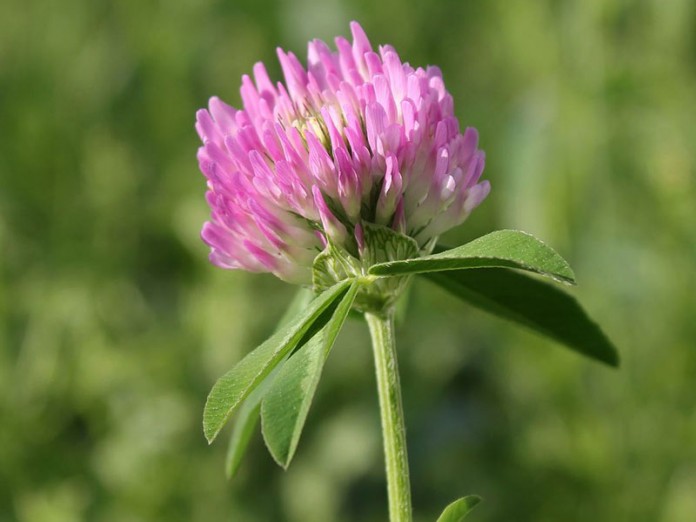For some producers across the state, last winter was hard on an established alfalfa hayfield. Areas of the field with lower fertility or short-term ponding were affected the most. Since alfalfa has autotoxicity causing us to not be able to replant alfalfa into an old stand to improve it, we must consider other options.
Our most common recommendation for these fields is to improve the stand with annuals for this year and rotate to another crop next year or harvest first cutting and rotate into a different crop. Another common option is to improve the stand with perennial grasses.
Red clover
Recently, I have had a few questions about using red clover to improve damaged hay fields. With improvements in red clover genetics, this may be an option to improve hay fields that need to stay in hay production for another two to three years.
Red clover is well adapted to poorly drained soils and tolerates lower soil fertility than alfalfa and a pH as low as 6.0. Unfortunately, red clover is a short-lived perennial historically only lasting the establishment year and one additional year. Modern varieties with improved genetic resistance have shown greater stand persistence of three to four years and improved yields. The advantage of red clover over grasses is that is does not need nitrogen fertilizer and has higher crude protein.
Variety selection is critical for longer stand persistence and yield. The three most common diseases to look for resistance to are northern anthracnose, southern anthracnose and powdery mildew.
Research
One study compared the importance of disease in different types of clover. It looked at variety not stated (VNS) red clover versus an improved variety. The stands were kept for three years with the improved varieties yielding at least three tons more than VNS over the three-year stand life, and the stand with the greatest disease resistance yielding nearly five tons more. All stands had a significant stand decline over the three years but on average the VNS red clover only had 0.25 plants per square foot while the improved varieties had 1.5 plants per square foot.
The University of Kentucky conducts variety trials every year on red clover. While their yields are often higher than what we can achieve with over five cuttings per year, it is a resource to compare varieties. Four commercially available varieties have significantly outyielded the others in both the 2-year-old and 3-year-old stand trials. These four varieties in no particular yield order are Freedom!MR, Freedom!, Blaze, and Kenland(certified). If trying to improve forage stands for more than two years, one of these varieties may be your best option.
Feeding clover
The other thing that must be considered is how you will feed the red clover forage. The first thing to consider is that red clover is much harder to make as a dry hay than other forages. It also feeds differently than alfalfa even though they can have similar crude protein of 16-22%, acid detergent fiber of 25-35% and neutral detergent fiber of 35-45%. Red clover contains polyphenol oxidases which inhibits protein degradation during fermentation causing it to have more bypass protein of 25-35%, compared to alfalfa at 15-25%.
Red clover can be fed in a lactating cow diet with studies showing both positive and negative results. When red clover was fed alone studies have shown decreased dry matter intake, milk production and protein production. When red clover is fed, though, in a ration with corn silage or alfalfa and corn silage, these effects were alleviated. While one study did not find an effect on milk production, it did find an increase in feed efficiency when red clover was included in the diet.
With fewer studies on feeding red clover than many other forages, consider using wet chemistry to analyze the red clover nutrient values. Especially consider wet chemistry for ADF, NDF, NDF digestibility and crude protein digestibility. Also, consider analyzing bypass protein to improve your ability to formulate a ration with red clover in it.
Takeaways. If you use red clover to improve your forage stand, plan to harvest it as silage or baleage. The ideal time to harvest red clover is in the late bud or early bloom stage, delayed harvest has shown to dramatically decrease quality and milk production.
If using red clover, it will be worthwhile to consider improved varieties even if they are more expensive to seed per acre. Red clover can feed to lactating dairy cows and will improve declining forage stands.













